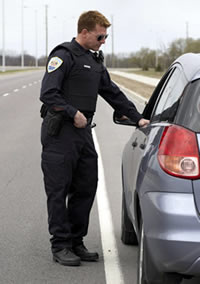 Section Warm-Up
Section Warm-Up

When you are driving for the first few months, you have a greater chance of getting a ticket than at any other time. This is because you are not familiar with the local rules of the road. Let’s study the rules of the road for citing sources in your presentation.
Answer the following questions to develop an understanding of the concept of PLAGIARISM in preparation for learning how to avoid it.
Is plagiarism always an intentional use of someone else’s words?
No. Plagiarism can happen unintentionally as well. Students must take responsibility for learning how to avoid it by using proper citation skills.
Explain the two ways you can commit plagiarism with words.
Plagiarism happens when you present someone else’s words as your own, like quoting someone without giving credit or buying a paper online and putting your name on it.
What other kinds of behavior constitute plagiarism?
Plagiarism also includes using someone else's ideas, such as using a thesis from an online source, or taking an idea for a story from another writer.
What are the consequences of plagiarism whether it is intentional or not.
You could fail the assignment or fail the entire course. Your institution could charge you with academic dishonesty and put it on your transcript, which would limit your educational opportunities and maybe even your career. The consequences can be dire.
How hard is it to get caught?
Not very hard at all. English teachers are adept at learning their student’s writing styles. They can tell when something is different. In addition, technology for educators keeps pace with the technology for students, so it is easy to go online and log in to one of the many tools that tracks all the papers out there in cyberspace to find a paper if a teacher thinks yours may be plagiarized.
How can plagiarism be avoided?
Work on large research projects step by step so they are not overwhelming. Think of research as a learning opportunity, rather than a chore. Choose a topic that sparks your curiosity and interest. Learn the two parts of proper citation or attribution: the works cited page and parenthetical citation (attribution within the text).
What is common knowledge and should it be cited?
Common knowledge is not cited, but it is sometimes hard to tell what is common knowledge. You can use three criteria to decide if information is common knowledge. 1) Many people seem to know the information. 2) You see the information repeated in several sources 3) The information appears in a very general reference work like an encyclopedia. If you are still unsure, cite it. It is always better to err on the side of caution.
To sum it all up:
- Plagiarism is:
- Using someone else’s ideas without giving them credit.
- Using someone else’s words without giving credit.
- Buying a paper and submitting it as your own or hiring someone to write your papers (this is like lip syncing).
- Plagiarism can have long lasting and far-reaching consequences.
- Plagiarism is easy to catch these days.
- Plagiarism can be avoided by:
- Completing research project in small steps.
- Learning how to use a Works Cited Page and Parenthetical Citation.